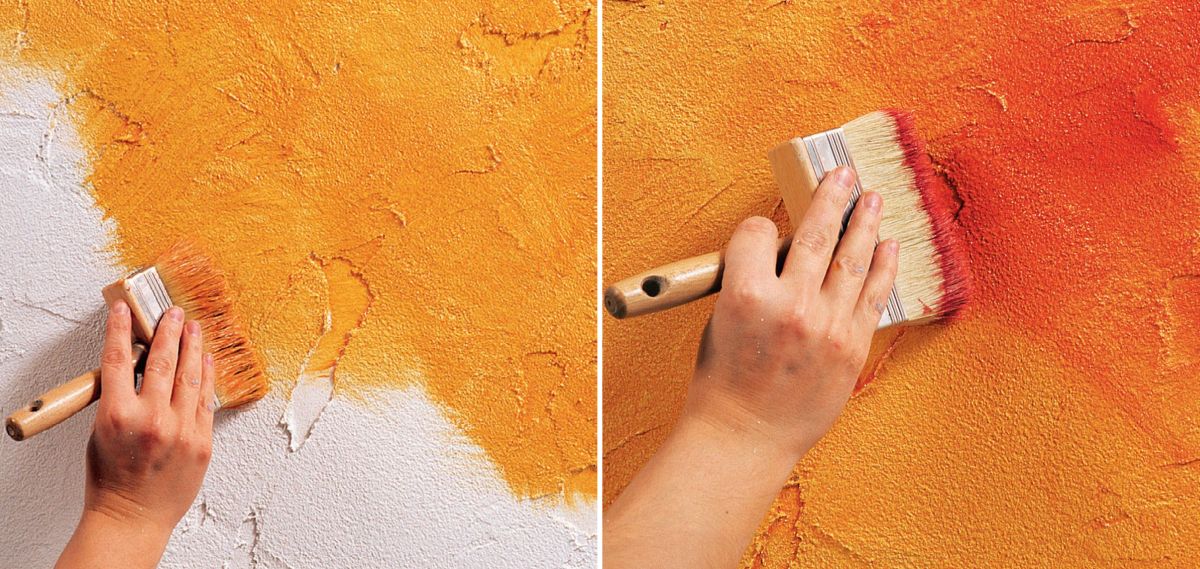 In addition to coated woodchip and patterned wallpaper, there is structure- and textured plaster for living room walls are becoming increasingly popular.
In addition to coated woodchip and patterned wallpaper, there is structure- and textured plaster for living room walls are becoming increasingly popular.
Should an interior wall be finished with a textured plaster earlier, it was with great effort, a lot of dirt and extensive craftsmanship. Today, plastering interior walls is hardly any work, than to paint a wall. Modern plasters are already mixed and are applied and structured with simple tools.
The pre-treatment
All smooth surfaces are suitable as a substrate for the plaster. Lime can do that- or cement plaster, also gypsum fiber- and plasterboard are just as suitable as chipboard or other construction panels. Proper pre-treatment is important. Old wallpaper, Loose components and distemper coats must be removed beforehand. Highly absorbent substrates must be primed. This works best with colorless, solvent-free primer, applied with brush or roller. Sanding substrates are also strengthened with it and the adhesion of the plaster is significantly improved.
grater- and spatula plaster
Textured plasters consist of a carrier compound based on synthetic resin with a high proportion of natural stone granules. On the wall that has been pre-treated with primer or primer paint, the mass is leveled off with a trowel and a smoothing trowel of grain size. The final appearance of the plaster can be influenced by further treatment.
With a wood- or plastic float will either mass in small circles, in criss-cross motions or constantly in one direction. The board rolls along on the granules, each grain leaving a mark in the mass. Depending on the rolling direction, a different pattern is created. The range of design options is diverse. It is only important, that the structure is uniform. Putty plasters, on the other hand, consist of a grain-free synthetic resin compound, which can be brought to the desired consistency by adding a small amount of water. The finer the pattern should be, the slimmer, the mass should therefore contain more water. It is applied with a smoothing trowel in a layer thickness of approx. 3 mm. Depending on the desired structure, spatulas are then used to work on the surface, To whom, brush, Roller or sponge used. Special effects can also be achieved with rubber textured rollers. To avoid approaches, should always be worked wet on wet when applying and structuring.
Store mixed plaster properly
All plasters should be stirred well before application. If the plaster appears too solid for the intended pattern, can simply be added some water. Close opened containers well, level the mass beforehand and cover it with a layer of water to prevent it from drying out. It should be used up soon. For larger areas, only use containers with the same batch number if possible.